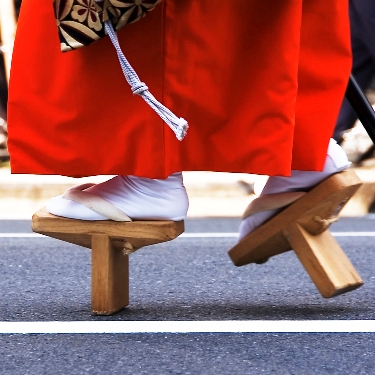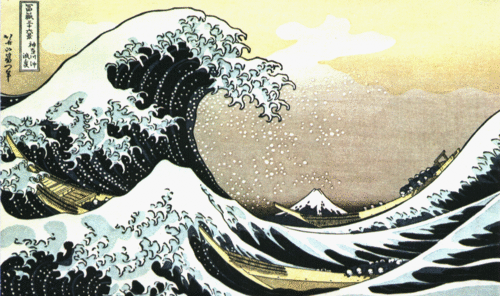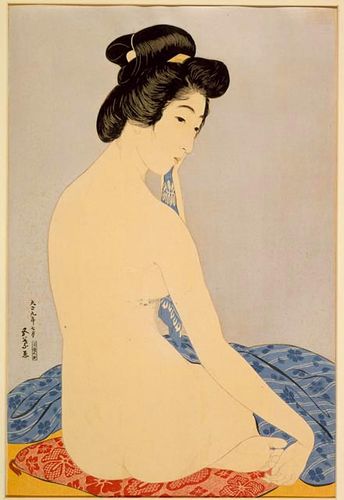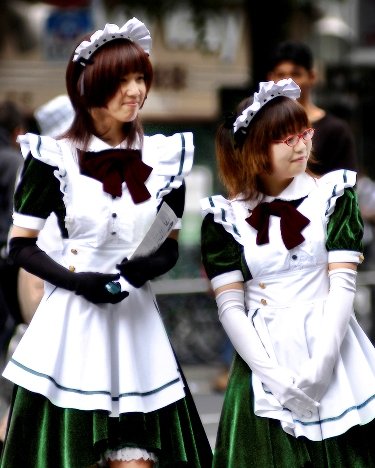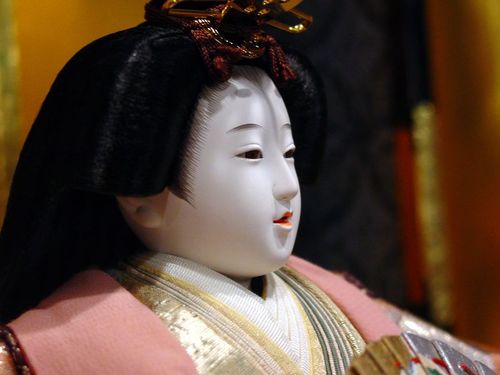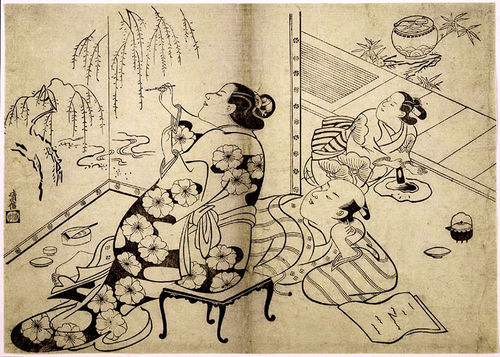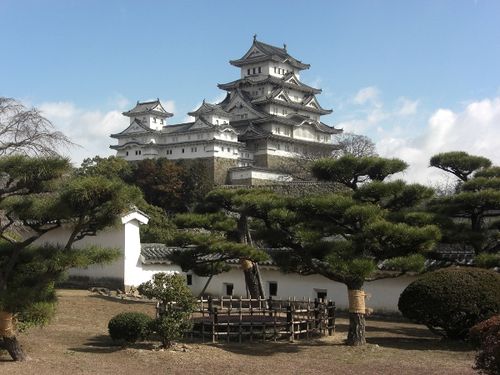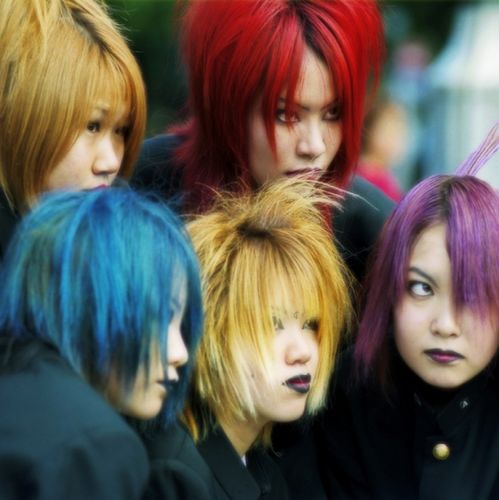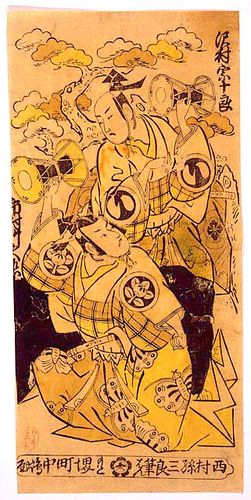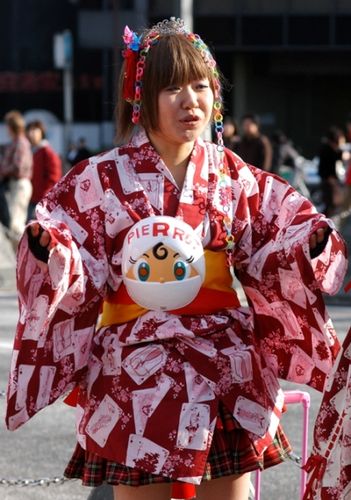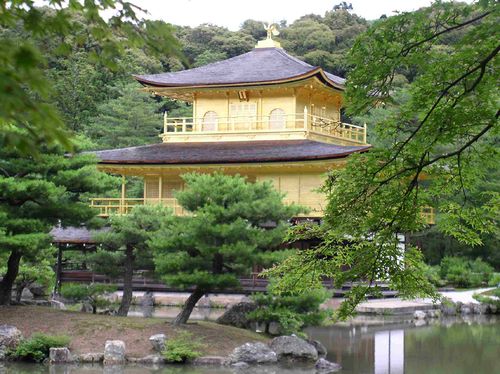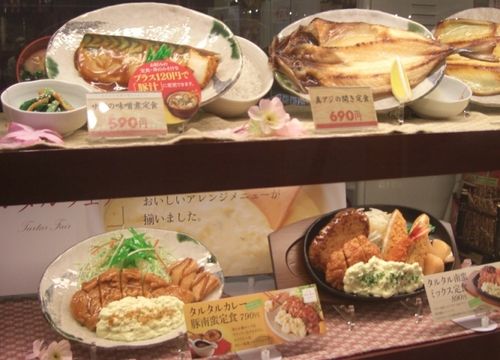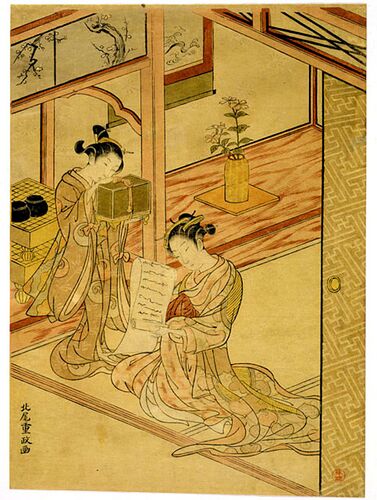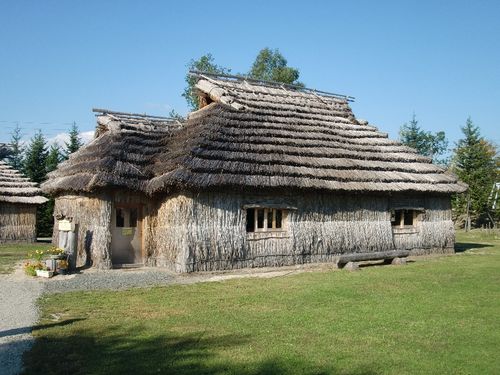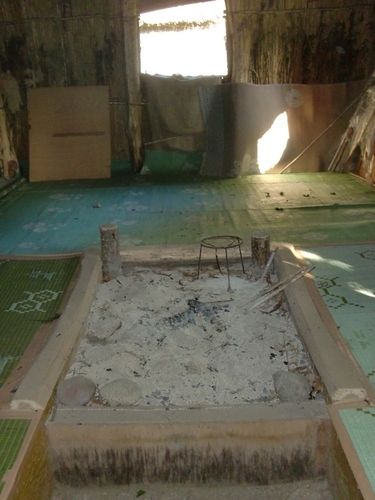|
|
|
|
Tengu-geta shoes may be worn in traditional festivals. Photo © by Sonny Santos, used by permission.
|
|
|
(PD) Artwork: Goyo Hashiguchi
|
浴後の女 Yokugo no Onna ('Woman after a bath'); woodblock print by Goyo Hashiguchi (橋口五葉 Hashiguchi Goyou), 1920.
|
|
|
|
|
Promoting a maid-kissa (メイド喫茶 meido-kissa, 'maid coffee shop') in Akihabara, Tokyo will involve looking the part; young women in maidlike waitresses' outfits are a common sight in this electronics quarter of the city. Photo © by Sonny Santos, used by permission.
|
|
|
(CC) Photo: Yasushi Arima
|
A traditional Japanese doll.
|
|
|
(PD) Artwork: Kiyonobu Torii
|
'Courtesan painting a screen'; woodblock print by Kiyonobu Torii ((鳥居清信 Torii Kiyonobu), 18th century.
|
|
|
(CC) Photo: John Stephenson
|
|
|
|
|
|
|
' Cosplayers' (from コスプレ kosupure 'costume roleplay') - teenagers who dress as characters from film, television or animé cartoons - pose for the cameras in Harajuku, Tokyo. These girls are dressed as members of the Japanese band 'Dir en grey'. Photo © by Sonny Santos, used by permission.
|
|
|
(PD) Artwork: Shigenaga Nishimura
|
Sojuro Sawamura and Takenojo Ichimura dancing with a tsuzumi drum; woodblock print by Shigenaga Nishimura, pre-1756.
|
|
|
(CC) Photo: Citizendium
|
Kinkaku-ji (金閣寺 or 'Golden Pavilion') is a Zen temple in Kyoto.
|
|
|
(CC) Photo: John Stephenson
|
Japanese restaurants often display plastic replicas of many dishes, so diners can see exactly what to expect.
|
|
|
(PD) Artwork: Shigemasa Kitao
|
|
|
|
|
(CC) Photo: John Stephenson
|
The Ainu people are native to northern Japan. A cise is a traditional Ainu dwelling, with a thatched roof and entranceway separate from the main interior space. These replicas can be seen at Nibutani, an Ainu-majority village in Hokkaido.
|
|
|
(CC) Photo: John Stephenson
|
The interior of this replica Ainu dwelling shows where food was prepared. In the background is a special opening that acted as a separate entrance for Ainu spirits.
|
|

